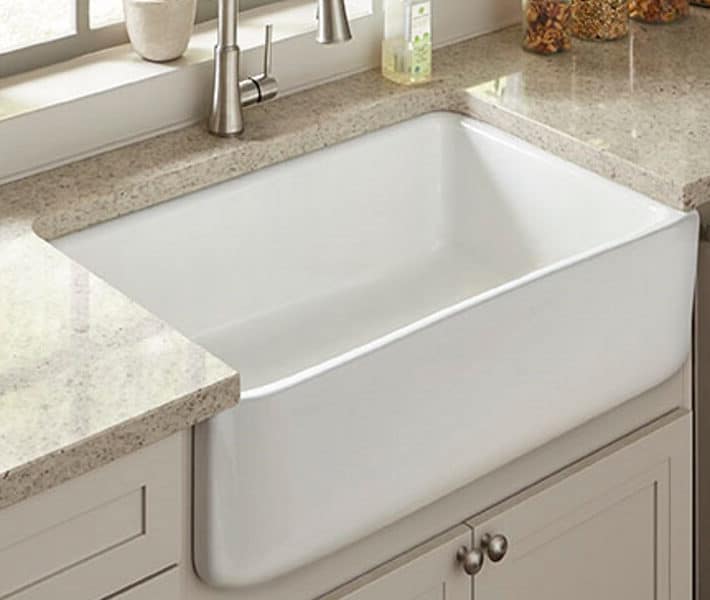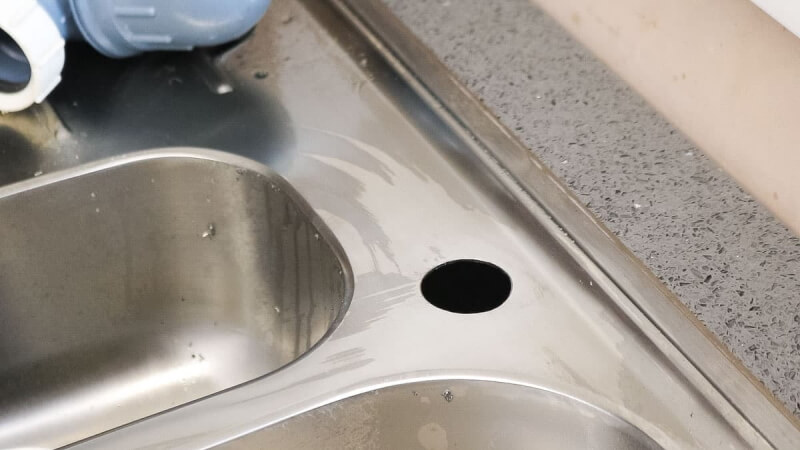Despite being costlier than other materials, granite remains the popular choice for modern kitchen countertops because it provides several benefits. It is easy to clean due to the smooth texture, and the appealing aesthetics come in form of speckled, marbled and basic patterns to offer you more options to match your current décor and personal style. It is also eco-friendly since it is a natural stone, durable and resistant to chipping and scratches. However, it can still develop stains when exposed to hard water constantly or for a long period. We will discuss how to remove hard water stains from granite in simple steps.
Mineral deposit from hard water makes your marble countertop look dull and unsightly and may damage it over time requiring you to reseal the granite, but you can avoid this by implementing the preventative measures we have explained in this article. If a white ring has already formed, then our instructional guide will direct you on how to remove hard water stains from granite countertops.
Even with the best care, you are bound to have splashes of hard water around faucets which leaves white calcium and magnesium deposits on your countertop when the water evaporates. Granite may also be stained by wine and damaged by hydrogen peroxide, alcohol, vinegar and the juice of citrus fruits which break the sealant over time.
This is why you should clean up spillage as soon as possible with a soft, damp cloth and a mild detergent. Avoid abrasive cleaning agents that might damage the granite surface although you could use approved commercial granite cleaners that you apply on the granite and leave it for an hour to loosen the stains.
Below you will find step-by-step instructions for different methods you can use to remove hard water stains from granite.
Unless you have an effective filter like this 6-stage water filtration system which has daily water output capacity of 75 to 90 gallons at pressure of 40-85 psi, then the most common stain you will find in the kitchen is water rings at the base of faucets caused by mineral deposits from spilled hard water. This powerful model utilizes reverse osmosis to eliminate 99% of Total Dissolved Solids (TDS), including odor, foul taste, VOCs and heavy metals.
Recent stains may be removed with a plastic scraper to avoid scratching the surface. Place the edge of a plastic putty knife flat against the granite and scrape the stains by pushing the blade gently. This causes the stains to flake off so they can be wiped with a soft, damp cloth. After rinsing, dry the surface with a towel.
Sometimes, the water rings require more elbow grease. If this is the case, you may use a sharp razor blade or a Brillo pad to gently scrub off the stains.
If the stains persist, you can prepare your own cleaning paste although you may have to apply it several times to get rid of the granite stain. To make the paste, mix baking soda with 3% hydrogen peroxide into thick consistency and apply a generous layer on the stain. Leave it for 24 hours or more, if need be, and then scrape it up gently with a soft brush before rinsing off the affected spots with water. Some users recommend covering the applied paste with a plastic wrap with small poked holes to speed up the stain-removal process and prevent water spilling on it and diluting the paste.
Other DIY cleaning solutions for stubborn granite stains include a mixture of flour or talc with diluted bleach, ammonia or hydrogen peroxide.
This multipurpose 1-gallon baking soda is food and USP pharmaceutical grade with no preservatives and it comes with 100% money back guarantee. To remove granite stains, mix a cup of it with 1 cup of white vinegar and 1 cup of salt and then spread the paste on the affected area.
We have mentioned abrasives like Brillo pads above which may be used in few cases to remove granite stains, but you have to be careful not to scrub aggressively to prevent sealant damage. Steel wool, harsh bleach and detergents should also be avoided, and rubbing alcohol and hydrogen peroxide should be used in diluted form.
To scrub a granite sink, consider investing in a brush with soft bristles that will not scratch the surface and worsen the situation. This is used alongside water and mild detergent such as dish soap.
There are difficult stains that necessitate application of commercial extractors and poultice products, especially if they have been on your granite countertop for a long period. You can purchase these cleaning agents at your local hardware or at a store that deals with stone surfaces such as granite.
Alternatively, you can make your own poultice Trusted Source Poultice - Wikipedia A poultice, also called a cataplasm, is a soft moist mass, often heated and medicated, that is spread on cloth and placed over the skin to treat an aching, inflamed or painful part of the body. It can be used on wounds such as cuts. en.wikipedia.org with baking soda. Mix ¼ cup of baking soda with water to create a thick paste. Spread a ¼-inch layer of it on the stain making sure the paste does not extend to more than a ½-inch from the stain. You should not apply it on the granite areas that don’t have stains because it can damage it. Remember to cover the paste with a plastic wrap.
If the stains have already broken the sealant barrier and made the granite porous, then you will notice that spilled water soaks in instead of forming beads on the surface. In this instance, you would have to reseal the granite countertop.
It is advisable to reseal granite after every few years as part of regular maintenance.
You can protect granite surfaces by applying a sealant to fill any pores cause by water stains. This creates a barrier so liquids can’t seep through and create set-in stains.
Typically, granite countertops should be resealed annually although the timeframe may vary according to the type of granite.
The second most effective way to avoid water stains on granite is to invest in a water filter that can trap mineral deposits. There are water filters for lead removal that also prevent calcium and magnesium content from landing on your countertop or forming stained rings around the faucet.
Cleaning stains as soon as you notice them will also make it easier to remove them before they set in.
As long as the sealant is unbroken, granite remains resistant to stains, scratches and chipping. Things that could compromise granite are abrasives, acidic juices and hard water when the minerals are left on the countertop or around the faucet base for a long period.
It is easier to prevent stains than to fix them, and a granite countertop with proper sealant is fairly resistant to water and stains. So, strive to keep the surface dry by cleaning up spillage and stains, avoid abrasives and consider an under-sink water filter that connect to a cold water supply to trap mineral deposits and contaminants before the water passes through the faucet.





